Hospital for Women
Soho Square, W1N 6JB
Medical dates:
Medical character:
1842 - 1988
Specialist
The Hospital was founded in 1842 in Red Lion Square by Dr
Protheroe Smith, a prominent London obstetrician. It was reputed
to be the first hospital in London for the 'treatment of those maladies
which neither rank, nor wealth, nor character can avert from the female
sex'.
The Hospital soon outgrew its Red Lion Square premises and, in 1852,
moved to buildings at 30 Soho Square and 1 Frith Street. At this
time 20 in-patients could be accommodated. By 1862 there were 50
beds.
In 1865 the freehold for the house next door, 29 Soho Square, became available and the hospital bought it for £2540.
Between 1867 and 1869 no. 29 was rebuilt in red brick with an extra two storeys being added for private patient accommodation.
In 1882 No. 2 Frith Street was purchased; it was rebuilt in
1894 to contain the Out-Patients Department and the nurses'
dormitories.
In 1904 the King Edward's Hospital Fund suggested that the Hospital
move from central London, but the Hospital Committee decided that none
of the alternative sites were better than the current one. Plans
for a new building on the same site fell through due to lack of money,
but modified alterations to 29-30 Soho Square were carried out in 1909.
A new stuccoed facade was added. Nos. 3 and 4 Frith
Street were incorporated into the Hospital building. The King
Edward's Hospital Fund provided most of the £20,500 for the
project.
During WW2 the Hospital was closed.
In 1988 it merged with the Elizabeth Garrett Anderson Hospital in Euston Road.
|
Present status (May 2008) |
|---|
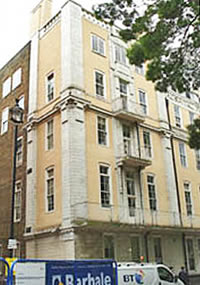
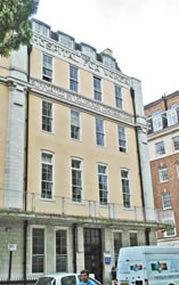
No. 29 Soho Square (left) and No. 30 (right).
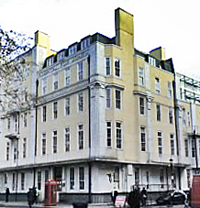
The Hospital building retains the appearance of two houses - No. 29 is three windows wide and five storeys high, while No. 30 is four windows wide and has a mansard roof.
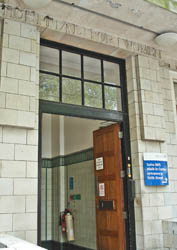
The doorway of No. 30 Soho Square with the name of the Hospital inscribed above. A notice directs patients to the clinic next door in Frith Street.
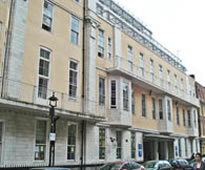
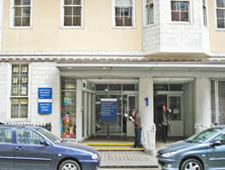
The Walk-In Clinic in Frith Street (left) and its entrance (right).
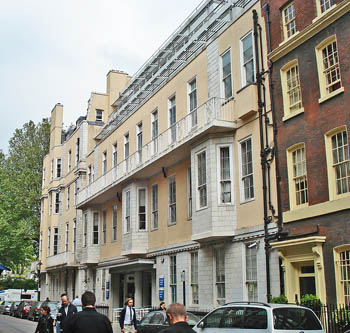
The Hospital building in Frith Street as seen looking north to Soho Square.
References